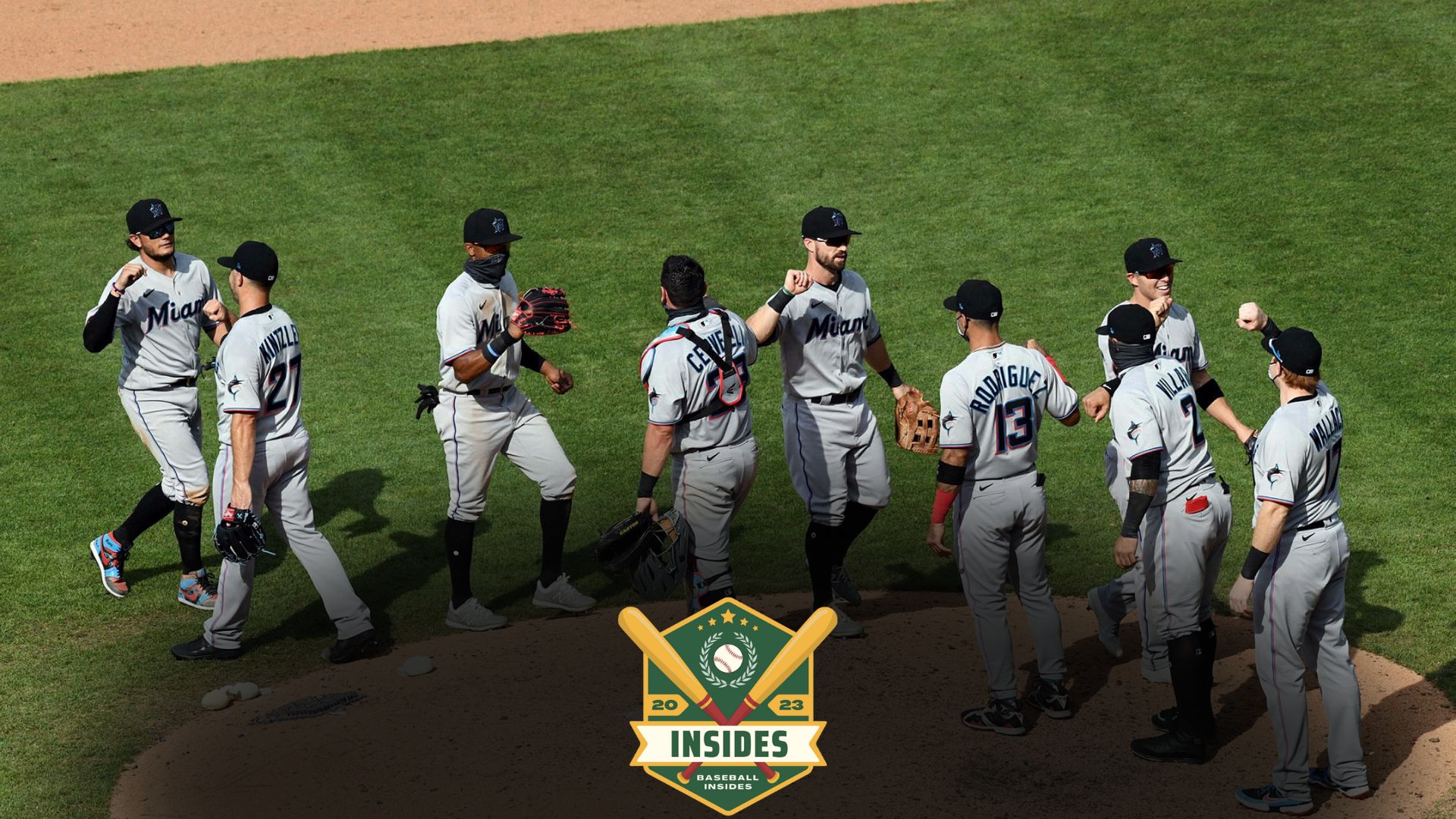
In this article:
Have you ever watched a baseball game and found yourself lost in the head-spinning whirl of players on the field? Wondering just how many players are there on a team? You’re about to get your answer!
In a traditional baseball game, each team is made up of nine players. This might come as a surprise, considering the highly dynamic nature of the game implies many more players’ involvement. But, yes, you heard it right. Nine players it is!
Let’s delve into the specifics of these positions to get a clearer picture.
- Pitcher: The player who serves the baseball to the opponent in the well-defined field area.
- Catcher: The player catches balls in the home plate that the batter does not hit.
- First Baseman: This player’s primary role is to make plays on balls hit toward the first base.
- Second Baseman: The player who guards the area to the first-base side of the second base.
- Third Baseman: He is the player that covers the area nearest to third base.
- Shortstop: The player who stands between the second and third base.
- Left Fielder: The outfield player who defends against hits into the area to the left of the center fielder.
- Center Fielder: Defends the area directly ahead of the catcher.
- Right Fielder: Positioned in the fielding area to the right of the center fielder.
So, next time you watch a baseball game, be sure to identify those key nine players who bring rhythm to the chaos of the game. Get tuned in to the excitement and strategy that unfolds in every sequence of this fantastic sport!
Understanding the Composition of a Baseball Team
Ever wondered how many baseball players make up a team? Baseball teams are known for their strategic complexity, and their composition plays a huge role.
Understanding the makeup of a baseball team not only helps to appreciate the tactics and strategies involved in the game but also provides compelling insights into the dynamics of the sport.
The number of baseball team members can vary significantly depending on the level of play, strategy, and tournament rules.
In Major League Baseball (MLB), for example, a team roster typically comprises 26 active players during the regular season, which expands to 28 players for September games.
This count, however, does not include players on the injured list, minor-league prospects, or coaches.
Here’s a quick breakdown:
- Position players: A team usually fields nine players who specialize in different positions — three outfielders, four infielders, a pitcher, and a catcher.
- Pitchers: A team usually has 12 to 13 pitchers to ensure endurance throughout a match and the season. They are further divided into starters and relievers.
- Reserves and bench players: These are the remaining players who could take up different roles, pinch-run, pinch-hit, or replace starters during a game.
It’s important to note that these numbers can fluctuate during the season due to injuries, drafts, trades, or changes in playing strategy. A team manager’s challenge is balancing the roster with a diverse skill set to ensure readiness for any play scenarios during the game.
This diverse spectrum of players and skills within a baseball team makes the game dynamic and unpredictable.
In the following sections, we’ll dive deeper into players’ roles, touch upon how injuries can affect team composition, and delve into the nuances of baseball team sizes throughout history.
While discussing the roles of various players on a baseball team, it’s also interesting to delve into specific statistics that impact the game, such as “What is a Hold in Baseball?” This metric provides insights into the effectiveness of relief pitchers, a crucial part of the team’s defensive lineup.
The Role of Position Players in Baseball Teams
Position players form the backbone of any baseball team. They are the athletes who man the field, each taking up designated spots in the game. Their chief roles include batting, fielding, and base running.
Let’s delve deeper into the various positions and their critical roles on the team.
Types of Position Players
In a standard lineup, a baseball team consists of eight position players excluding the pitcher. These positions are:
- First Baseman
- Second Baseman
- Short Stop
- Third Baseman
- Left Fielder
- Center Fielder
- Right Fielder
- Catcher
Duties of Position Players
Each of these players has a specific role in both offense and defense. Besides pitching and catching, the four infielders are primarily responsible for preventing offensive players from advancing to further bases.
They regularly field the ball toward the first baseman to get out. Their role calls for quick reflexes and excellent throwing abilities.
The three outfielders, typically positioned in left field, center field, and right field, work to catch fly balls and gather any ground balls that pass the infielders. They need superb catching skills and should be able to throw the ball accurately over long distances.
The catcher has a unique role, positioned behind the batter and tasked with catching pitches that the batter doesn’t hit.
They also play a crucial role in planning the defensive strategy with the pitcher and often act as leaders on the field. Their position demands great agility, strength, and exceptional hand-eye coordination.
When it’s the team’s turn to bat, all position players, including the catcher, participate. The manager decides each player’s position in the batting order based on their hitting abilities and the strategic needs of the team.
These men stand as a formidable force across the intricate mosaic of a baseball team’s composition. They are integral to the very fabric of the game — and an understanding of each player’s role within the team is crucial to appreciating baseball’s complex, thrilling spectacle.
Pitchers: The Heart of the Team
Think of the pitchers as the pacemakers of a baseball game. They launch the action with every pitch, determining the pace and, often, the outcome of each contest. Without a strong, versatile, resilient group of pitchers, victory would be nothing short of a pipe dream.
The Starter and the Relief
In a traditional baseball game, there are typically two types of pitchers: the starting pitcher (commonly known as ‘the starter’) and the relief pitcher. Each has a specific role and is vital to the team’s overall performance.
The starter is the pitcher who throws the game’s first pitch for a team. These are typically the top pitchers on the team, thrown into the thick of the action to compete directly against the opposing team’s best hitters.
The starter is generally expected to pitch for several innings, usually around 5-7, depending on their efficiency and the team’s strategy.
Relief pitchers, on the other hand, come into the game after the starter has been pulled out. Their role is to maintain or change the status of the game. Relievers come in various forms, including middle relievers, who enter in the middle innings if the starter struggles, and setup men, who pitch in the eighth inning.
And closers, who tend to pitch in the last inning to finish the game. Relief pitchers also include left-handed specialists, known as “LOOGY” (Lefty One-Out Guy), who are brought in to face one particularly tough left-handed batter.
Reserves and Bench Players: The Unsung Heroes
As you delve deeper into baseball, you’ll come to appreciate the fundamental strategy on the bench – the unsung heroes, the reserves, and the bench players.
Often overlooked in the grand scheme of gameplay, their roles are pivotal and can drastically alter the course of a match.
A standard baseball team carries a designated number of reserve players. These players aren’t in the starting lineup but serve as substitutes during the game. They offer flexibility, a change in-game dynamics, and an opportunity for rest and recovery for starters.
In Major League Baseball (MLB), there are typically around 13 position players, including reserves.
Understanding the makeup of a baseball team also involves looking at the equipment used at different levels of play. For instance, when exploring “Why Does Little League Use Aluminum Bats?”, we uncover considerations around safety and cost that influence the game right from its grassroots.
Flexibility in the Field
Reserve players bring an element of adaptability to a team. Imagine a scenario where a starting player gets injured mid-game or is experiencing fatigue.
The bench player steps up, ready to take on the position and keep the game going. Additionally, these players can cover various positions, offering an array of options to the team manager.
A Fresh Change
Bench players introduce a new dynamic to the game. A change in the lineup can unsettle the opponents’ plans, making bench players an unexpected strategic addition to the game. With differing skill sets and surprises, they can provide the spark that turns a game around.
Rest and Recovery
It’s a well-known fact that baseball can be physically taxing. While starters consistently play, they require rest periods to prevent injuries and maintain their performance.
That’s where reserves come into play, by stepping in occasionally, providing much-needed rest for starters without compromising the team’s performance.
To appreciate the true value of reserve and bench players, visualize a baseball team as an orchestra. While the starting lineup may be the lead performers, reserves are like the versatile supporting musicians ready at a moment’s notice to step in and hit the right notes, ensuring the concert goes on.
They might not receive the same level of public acknowledgment, but within the team, their importance cannot be overstated. Their multi-faceted roles and contributions highlight why the reserves and bench players are the unsung heroes of baseball.
The Importance of a Balanced Team
When it comes to building a successful baseball team, balance is key. But what does a balanced team look like in this context?
It’s more than just a numerical count of players on a team. It means having players who excel in different areas and perform varied roles harmoniously. It’s about assembling a group of individuals that collectively form a competent and versatile unit.
All the positions on a baseball field complement each other – from the pitchers to the fielders, from the starters to the reserves. It’s important that each player performs their role to the best of their abilities, contributing to the overall strategic game plan of the team.
But there’s more to the concept of balance – it extends beyond the physical playing field. A balanced team also reflects a healthy physiological and psychological state.
Baseball, like any sport, can be demanding both physically and mentally. Ensuring players are fit and mentally ready for all games is critical to achieving balance.
Achieving a balanced team also involves rotating and resting players, allowing every team member to perform at their best on the field.
Rest and recovery are as important as hustle and skill in the long baseball season. They ensure that players are fresh and injury-free, ready to perform best when they step onto the field.
Lastly, a balanced team is not static but dynamic – it evolves and adapts. As the season progresses, a team needs to reassess and modify its structure, optimizing the composition based on its performance, players’ health, opponents’ strategies, and other changing circumstances.
So, in essence, a balanced baseball team is a blend of skill, strategy, adaptability, and resilience. It’s about having the right mix of players in the best possible condition, ready to adapt to whatever the game might throw their way.
How Many Pitchers Are Typically on a Baseball Team
There isn’t a hard and fast rule regarding the number of pitchers on a baseball team. However, you’ll typically find that a Major League Baseball team will carry an average of 12 to 13 pitchers on their 25-man roster during the regular season.
The reason behind this is quite simple: pitching is physically and mentally demanding and requires ample rotation to maintain optimum performance and reduce the risk of injury.
But you might ask, how does that compare when we break down the roster? Let’s dive deeper.
- Starting pitchers: You’ll usually find five on a standard baseball team. These athletes specialize in maintaining long innings and kicking off the game on a strong note. They are typically scheduled to start games on a rotation to give each pitcher adequate rest between starts.
- Relief pitchers: Besides the starters, a team will have around seven or eight relief pitchers. Their role? Stepping in when the starting pitcher cannot continue, to provide a different style of play, or save the day in high-pressure situations.
Essentially, having multiple pitchers affords the team flexibility and the ability to strategize against specific opponents. Each pitcher brings a unique skill set and style to the mound, making it a game of strategy for the opposing batters and the manager who makes the call on who pitches, when, and for how long.
Moreover, in time of doubleheaders (two games played between the same teams on the same day) or during the playoffs, teams might expand their roster and number of pitchers to ensure they are well covered for all situations.
In other words, while the typical number of pitchers is around 12-13, there may be certain instances where this number could increase.
However, remember that these numbers can vary depending on the team’s strategic decisions, particular game scenarios, and even the time of the season. It’s part of the many moving parts that make baseball an intriguing and dynamic sport.
In discussing the development of young players within a baseball team, it’s pertinent to address appropriate equipment sizes. Thus, finding out “What Size Baseball Bat for 8 Year Old?” can be crucial for coaches and parents looking to support their child’s growth in the sport effectively.
The Impact of Injuries on Team Composition
In the high-pressure world of baseball, injuries can be a game-changer. They disrupt your team’s composition and influence the overall performance. If there is one thing that’s certain in baseball or any other physically demanding sport, players are at a substantial risk of getting hurt.
Injuries are unfortunate occurrences that can substantially shape a baseball team’s composition. When a key player is injured, it sets a chain of events into motion.
Essentially, this becomes an uphill battle for the team, particularly when they have to make certain strategic adjustments to compensate for the loss.
Impact on Primary Lineup
When fallout from an injury hits the team’s primary lineup, it forces a potential reshuffle of position players and pitchers. For instance, if a dominant pitcher cannot play, the coach must reassign roles amongst the existing pitcher pool. This often involves pushing relief pitchers into the starter’s slot or vice-versa.
Replacement and Reserve Players
The depth of a team’s bench tends to get tested in the wake of an injury. Reserve players are thrown into the spotlight to fill the gap left by the injured player.
Their ability to rise to the occasion can dramatically swing the game’s outcome in your team’s favor or potentially against it. This stresses the importance of developing a strong reserve bench with versatile players who can perform under pressure.
Strategic Adjustments
Injuries could also mandate strategic shifts in terms of gameplay, altering your team’s fielding and batting arrangements. Depending on the magnitude of the injury, these changes can either be minor shuffles or major adjustments that could potentially alter the team’s overall gameplay style.
In conclusion, the impact of injuries on a baseball team’s composition resonates far beyond the playing field. They test the players’ mettle, the coach’s tactical understanding, and the bench’s depth.
Understanding this aspect of the game is crucial and underpins the necessity of a balanced, flexible roster equipped to counter the hurdles an injury throws their way.
The Challenges of Selecting Players for the Team
Selecting the right players for a baseball team represents a significant challenge, even for seasoned managers and coaches. Several factors come into play, including many player abilities, team needs, strategic game plans, and the dynamic nature of the sport itself.
It’s a delicate balancing act that requires significant knowledge, intuition, and a bit of luck.
Assessing Player Abilities
Every player brings a unique set of skills and talents to the diamond. Coaches must evaluate each player’s abilities, not only in their primary position but also in their overall athleticism and versatility.
This may include assessing their batting, fielding, base running skills, mental toughness, and understanding of the game. It’s not just about individual talent but how each player’s abilities can contribute to the overall team performance.
Identifying Team Needs
While individual talent is important, team roles can’t be overlooked either. A team might be packed with excellent hitters but lack a solid pitcher, catcher, or shortstop. In baseball, a well-rounded team often triumphs over a team of individual superstars.
Identifying gaps or weaknesses in the team lineup can guide the selection process, helping determine where new players could have the greatest impact.
Strategizing and Planning
Player selection often aligns with the team’s strategic game plan. Coaches may favor certain types of players depending on the style of play they wish to implement.
For example, a team that relies heavily on speed and stealing bases may prioritize selecting fast players with strong base running abilities.
Meanwhile, a team focusing on power-hitting might prefer players with a knack for knocking it out of the park.
Dealing with the Unexpected
Despite the best-laid plans, baseball is a game full of surprises. Injuries, slumps, trade opportunities, and ascending young talent can all wrench in previous team compositions.
Coaches must be ready to reassess their player selections and make necessary adjustments throughout the season.
Given these challenges, it’s clear that player selection for a baseball team extends far beyond simple talent scouting. It’s a complex process that requires careful planning, continuous evaluation, and a deep understanding of the game’s dynamics.
The Changing Dynamics of Team Size in Baseball History
Baseball, a veritable cornerstone of American sports culture, has seen a striking evolution in its team structure. This evolution can be seen quite clearly when examining the changing dynamics of team size, particularly in the context of the major leagues.
As you journey through baseball history, you’ll see how this evolution has shaped the game’s strategies, performance, and very essence.
In the infant days of baseball, during the late 19th century, teams often consisted of nine or ten players, mirroring the nine positions on the baseball field. The role of the tenth player, if one was used, varied.
However, as the game matured and rules solidified, the number of players was firmly set at nine on the field. This translated to typically having 16 to 18 players on a team to accommodate for injuries and offer some strategy variability.
Interestingly, it wasn’t until the 20th century that we saw teams enlarging their roster size to accommodate a growing specialization of roles, particularly with pitchers.
Over the course of the 20th century, team sizes ballooned considerably. In 1910, Major League teams were limited to 21 players. By 1989, following a series of modifications, expansions, and strategic shifts, the maximum number of players allowed on a baseball team ballooned to a whopping 40.
Baseball rules today allow for a 26-player active roster, but teams can have up to 40 players under contract, referred to as the 40-man roster. This allows teams to keep a talent pool for development, replace injured players, and adjust their strategy as the season progresses.
It’s important to mention that this limit may vary in minor leagues or other baseball-playing nations. Nevertheless, it’s evident that team sizes and rosters have come a long way since the sport’s early days.
Changes in team sizes have brought about significant shifts in gameplay dynamics, the number and types of roles players can perform, strategic flexibility, and the overall evolution of baseball.
It’s a fascinating glimpse into how a pastime turned into an intricate, full-scale operation, mirroring the increasing complexity and fascination of the sport beloved by millions globally.
Conclusion
In conclusion, understanding the number of players on a baseball team is essential to appreciate the complexities and intricacies of this popular sport. A standard baseball roster, at the professional and collegiate levels should have 26 active players.
Nine players appear on the field during the game, each having a specific position. The team also generally consists of reserves, pitchers, and other players who each add an interesting element to the game.
Whether you’re an avid fan, an aspiring player, or a newcomer to the sport, having this knowledge will help you contextualize and appreciate this beloved game’s strategies and team dynamics on a deeper level.
Remember also that the number may vary slightly depending on the league level and specific tournament or game regulations. There are always exceptions and caveats for each situation in the sport, and this complexity makes baseball so captivating.






